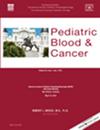Association of Unmet Social Needs With Disease-Related Outcomes in Pediatric Patients With Sickle Cell Disease
Abstract
Background
Social determinants of health (SDoH) are socioeconomic factors that influence health and well-being, though when unmet can greatly contribute to health disparities. Individuals with sickle cell disease (SCD) are at increased risk of mortality, disability, and healthcare utilization. However, there are limited data linking specific social needs with disease outcomes in this population. Therefore, we sought to identify the unmet needs in one institution and their association with healthcare utilization.
Methods
Children with SCD and their guardians answered demographic and SDoH questionnaires during routine Sickle Cell Clinic appointments. We defined an unmet social need as any positive answer to the SDoH questionnaire. Disease outcome variables were electronic health record (EHR)-documented emergency department (ED) visits, hospitalizations, clinic appointment attendance, and guardian-reported acute SCD events in the previous year.
Results
A total of 114 parent–guardian dyads participated, with 103 having complete data to analyze. In all, 52% of subjects reported at least one unmet social need with food insecurity (36%), trouble paying utility bills (28%), and unemployment (16%) being the most prevalent. Subjects with at least one unmet need had two times the rate of ED visits and/or hospitalizations and were 1.15 times more likely to have an SCD event in the past year. However, only the association with ED visits was statistically significant (p = 0.03).
Conclusion
Over half of subjects reported at least one unmet need; the most common being reliable access to food, which has the potential to impact health outcomes of sickle cell patients. Furthermore, unmet social needs are linked to healthcare utilization and SCD-related complications, supporting routine screening for SDoH in this population.


 求助内容:
求助内容: 应助结果提醒方式:
应助结果提醒方式:


